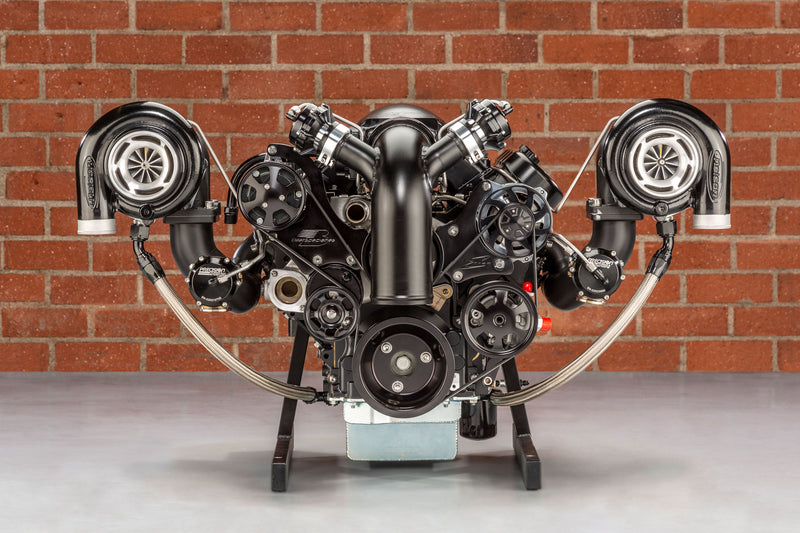The Quest for Ultimate Driving Power: Checking Out the Peak of Engine Performance and Technological Advancements in the Automotive Field
In the world of automobile design, the search of maximum driving power has been a relentless quest that has unfolded through the advancement of engine layout and the combination of cutting-edge technologies. From the careful craftsmanship of combustion engines to the quick developments in electric propulsion systems, the automotive field stands at the cusp of a brand-new period defined by extraordinary efficiency abilities. As scientists and engineers delve much deeper right into the worlds of computational liquid dynamics and explore cutting-edge fuel technologies, the perspective of opportunities increases tremendously. Stay tuned as we unravel the detailed tapestry of technical breakthroughs that are forming the future of automotive power and efficiency.
Development of Engine Style

In addition, the combination of turbocharging and supercharging modern technologies has changed engine layout by improving power without significantly enhancing engine size. These forced induction systems press the intake air, enabling even more fuel to be ignited, therefore producing higher power result from a smaller sized engine. This advancement has been particularly vital in boosting the performance of smaller sized variation engines while keeping gas efficiency requirements.

Performance-Enhancing Fuel Technologies
The execution of innovative gas innovations has substantially added to boosting engine performance in modern-day cars. Biofuels, acquired from renewable resources like algae, corn, or sugarcane, deal enhanced and minimized exhausts engine efficiency. Furthermore, gas ingredients and detergents are being formulated to clean engine parts, maximize combustion, and decrease rubbing, therefore boosting general automobile efficiency.
Advancements in Electric Propulsion
Considerable strides in electrical propulsion modern technology have actually revolutionized the automobile market, leading the way for a new era of reliable and lasting transportation. Electric vehicles (EVs) are acquiring appeal as a result of their environmental benefits and developments in battery innovation, making it possible for longer driving ranges and shorter billing times. Manufacturers are investing greatly in study and advancement to boost the efficiency of electric propulsion systems, focusing on enhancing power outcome, improving energy performance, and decreasing total weight.
One remarkable advancement in electric propulsion is the advancement of sophisticated electrical motors that supply greater torque and power thickness, causing enhanced acceleration and general driving performance. Additionally, regenerative important source braking systems have been fine-tuned to capture and keep power during deceleration, additional enhancing the effectiveness of EVs.
Furthermore, the combination of smart modern technologies, such as expert system and anticipating analytics, is enhancing the management of electrical propulsion navigate here systems, guaranteeing optimal efficiency under various driving conditions. These advancements in electrical propulsion are reshaping the vehicle landscape, driving the market in the direction of a much more lasting and amazed future.
Influence of Computational Fluid Dynamics
With improvements in electric propulsion pressing the boundaries of auto innovation, the integration of Computational Liquid Dynamics is playing a pivotal function in optimizing wind resistant efficiency and improving general effectiveness in automobile design. Computational Liquid Characteristics (CFD) involves making use of computer system simulations to examine the flow of air around a car, allowing engineers to anticipate how style modifications will certainly influence aerodynamics without the demand for costly physical prototypes. By properly modeling airflow patterns, CFD enables the improvement of vehicle forms to minimize drag, improve air conditioning, and enhance security.
CFD allows engineers to optimize airflow around components such as radiators, engine bays, and wheel wells, contributing to enhanced efficiency and general driving experience. In verdict, the assimilation of Computational Liquid Characteristics represents a click here to find out more significant step onward in the mission for ultimate driving power and performance in the automotive market.
Future Patterns in Engine Technology
In the dynamic landscape of auto design, innovative advancements are forming the future trajectory of engine innovation. The future of engine style is noted by a solid focus on efficiency, efficiency, and sustainability. Producers are increasingly concentrating on creating engines that not only deliver high power results yet additionally prioritize environmental responsibility by lowering discharges and improving gas efficiency.
One prominent fad in engine development is the rise of electrification. Hybrid and electrical powertrains are acquiring traction as practical alternatives to traditional burning engines. These technologies supply the potential for significant decreases in carbon discharges and raised power effectiveness, lining up with global initiatives to combat climate modification.
In addition, developments in materials science and production methods are making it possible for the production of lighter and more resilient engine components. This change in the direction of light-weight materials such as carbon fiber and light weight aluminum alloys adds to improved performance and gas economic climate.
Verdict
In conclusion, the search of ultimate driving power in the vehicle sector remains to drive innovations in engine design, fuel modern technologies, electric propulsion, and computational fluid characteristics. The evolution of these innovations is forming the future of engine development, leading the way for extra efficient and powerful lorries (engines for africa). As the industry remains to push the limits of what is feasible, we can anticipate to see even a lot more cutting-edge advancements in the pursuit for peak performance
One of the essential turning points in engine style development is the shift from traditional carbureted engines to contemporary fuel-injected systems. By exactly metering the fuel shipment to each cyndrical tube, fuel-injected engines optimize burning, resulting in far better efficiency and minimized environmental impact.
In addition, the assimilation of turbocharging and turbo charging innovations has revolutionized engine layout by improving power without substantially increasing engine dimension (engines for africa).The application of advanced gas modern technologies has significantly added to improving engine efficiency in modern vehicles. Furthermore, fuel ingredients and detergents are being formulated to tidy engine components, maximize combustion, and reduce rubbing, thereby enhancing general vehicle efficiency